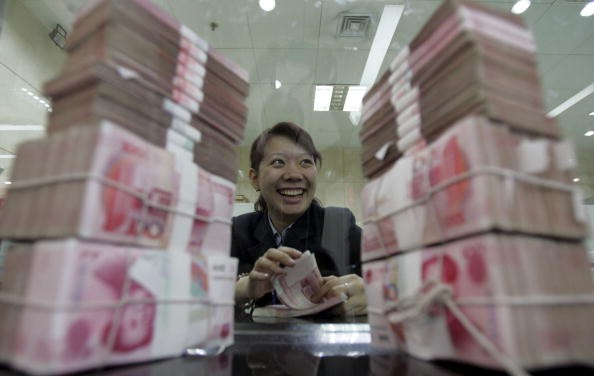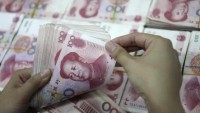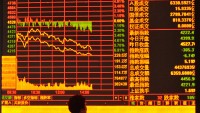China's Yuan Loses Value for Second Straight Day
| Benjie Batanes | | Aug 12, 2015 11:50 AM EDT |
(Photo : Getty Images/China Photos) At the close of trading on Wednesday's close, the Chinese yuan had shed more than 3 percent of its value in the local market and almost five percent in the international financial market.
Chinese financial authorities have let the yuan fall in value for the second straight day on Wednesday, providing a boost for the country's exporters. Meanwhile, other countries, such as the United States, have denounced China's decision to let the yuan devaluation trigger speculations of a currency war.
Like Us on Facebook
Reuters reported that the yuan closed on Wednesday at 6.4510, its lowest value in four years. The People's Bank of China (PBOC) has reassuranced investors that its decision to devalue the yuan is meant to make the currency amenable to the dictates of the international foreign exchange market. The PBOC said that it has no intention of letting the yuan continuously lose its value.
An unnamed foreign exchange banker based in Shanghai confirmed the PBOC's declaration, adding that government-owned banks were unloading their dollars on Wednesday to arrest the yuan's further decline.
As of Wednesday, the Chinese currency has shed more than 3 percent of its value in the local market and almost five percent in the international finance market.
The two-day devaluation of the yuan has caused many stock markets in Asia and Europe as well as the United States to fall from one to two percent. Financial analyst are warning that the yuan's continuing devaluation may trigger a currency war, according to The Guardian.
Foreign exchange experts said that if the PBOC lets the yuan fall further, it may prompt other countries to devalue their currency to make it more competitive against the Chinese currency.
The BBC reported that the Chinese central bank has changed its currency policy of being the only decision maker when it comes to determining the daily value of the yuan.
The PBOC will now let the yuan's value be determined by the market forces as long as it does not go beyond or lower than 2 percent from the midpoint rate. The midpoint value will in turn be determined by the yuan's last trading rate and the significant events happening in the international market.
American Senator Chuck Schumer, however, is convinced that China is deliberately letting its yuan devalue to help its exports recover. By July of this year, China's exports had contracted by more than 8 percent.
Tagsyuan devalues, Yuan Depreciation, currency war, yuan spot market rate, yuan exchange rate, People's Bank of China (PBOC), Chuck Schumer, midpoint rate
©2015 Chinatopix All rights reserved. Do not reproduce without permission
EDITOR'S PICKS
-

Did the Trump administration just announce plans for a trade war with ‘hostile’ China and Russia?
-

US Senate passes Taiwan travel bill slammed by China
-

As Yan Sihong’s family grieves, here are other Chinese students who went missing abroad. Some have never been found
-

Beijing blasts Western critics who ‘smear China’ with the term sharp power
-

China Envoy Seeks to Defuse Tensions With U.S. as a Trade War Brews
-

Singapore's Deputy PM Provides Bitcoin Vote of Confidence Amid China's Blanket Bans
-

China warns investors over risks in overseas virtual currency trading
-

Chinese government most trustworthy: survey
-

Kashima Antlers On Course For Back-To-Back Titles
MOST POPULAR
LATEST NEWS
Zhou Yongkang: China's Former Security Chief Sentenced to Life in Prison

China's former Chief of the Ministry of Public Security, Zhou Yongkang, has been given a life sentence after he was found guilty of abusing his office, bribery and deliberately ... Full Article
TRENDING STORY

China Pork Prices Expected to Stabilize As The Supplies Recover

Elephone P9000 Smartphone is now on Sale on Amazon India

There's a Big Chance Cliffhangers Won't Still Be Resolved When Grey's Anatomy Season 13 Returns

Supreme Court Ruled on Samsung vs Apple Dispute for Patent Infringement

Microsoft Surface Pro 5 Rumors and Release Date: What is the Latest?













